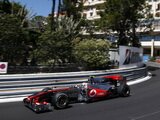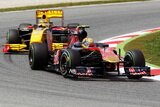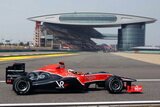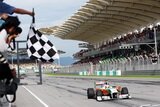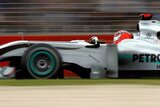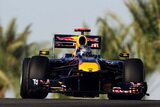
The Canadian Grand Prix returns to the Formula One calendar, after a one-year absence, to host round eight of this year’s FIA Formula One World Championship. A fixture since 1967, at three venues, the Canadian GP is most strongly associated with the Circuit Gilles Villeneuve, where the race has been held since 1978, apart from 1987 and 2009. This year’s race will be the 41st edition of the Canadian GP.
The circuit, located on the man-made ?le Notre-Dame, has a reputation for being extremely hard on machinery, thanks to its high-speed straights punctuated by two hairpins. Both engines and brakes are tested to the limit by this layout: it has the longest full-throttle time of any contemporary Formula One track, while the two hairpins demand that teams optimise their cars’ braking capability in order to avoid mechanical failure. Despite the circuit being a permanent track, its set-up requirements are similar to those of a street circuit, as its corners are predominantly low- and medium-speed. Teams with the best engine performance have traditionally performed well here.
An extremely popular venue with teams, drivers and media, thanks to its proximity to bustling Montr?al – the capital city of Canada’s Qu?bec region – the Circuit Gilles Villeneuve is the only North American stop on the 2010 Formula One calendar.
CHANGES TO THE CIRCUIT SINCE 2008
The track has been resurfaced in the areas affected by degradation during the 2008 event.
The run-off areas at turn 6 and turn 8 have been laid with asphalt.
A number of extra guardrail posts have been added.
FAST FACTS: CANADIAN GRAND PRIX
The ?le Notre-Dame was built in time for Canada’s Expo 1967, a World’s Fair that celebrated the country’s centenary. Formed from 15 million tons of rock extracted during Montr?al Metro excavations, the island was adapted for the 1976 Olympic Games to contain a rowing basin that remains within the circuit perimeter.
One of the island’s noted landmarks is the Montr?al Biosphere – a geodesic dome designed for the 1967 Expo by Richard Buckminster Fuller. It was originally built as a steel-framed, clear plastic bubble, but a fire in 1976 burned away the acrylic shell, leaving the steel frame on view. The Biosphere has appeared in a number of science-fiction films.
Five drivers have won their first race at this track: Gilles Villeneuve (Ferrari, 1978); Thierry Boutsen, (Williams-Renault, 1989); Jean Alesi (Ferrari, 1995); Lewis Hamilton (McLaren-Mercedes, 2007) and Robert Kubica (BMW, 2008).
Robert Kubica’s 2008 Canadian Grand Prix victory was also BMW’s first – and to date only – win for the team as a manufacturer, although it had previously won grand prix races and championships as an engine supplier.
One year before his first win, Kubica suffered a major accident on lap 27 of the 2007 Canadian race. After clipping Jarno Trulli’s Toyota, Kubica’s car became airborne at more than 300km/h, hit a safety barrier and barrel-rolled to a halt. Despite the violence of the accident, Kubica suffered only minor injuries and concussion.
Three venues have hosted the Canadian GP: Mosport (1967, 1969, 1971-77); Mont-Tremblant (1968, 1970) and Montr?al (1978-2010, excluding 1987 and 2009). The Circuit Gilles Villeneuve was named after the late French-Canadian driver following his death in 1982. He took his first grand prix victory at the track when it was still the Circuit ?le Notre-Dame.
The Canadian Grand Prix will feature live demonstrations of life-saving vehicle technologies. The Canadian Automobile Association (CAA), in partnership with the FIA Foundation, Transport Canada and the CAA Qu?bec will hold a press conference and vehicle demonstrations featuring Michael Schumacher and Montr?al native Jacques Villeneuve to raise awareness of eSafety technologies. The demonstrations will be held on Thursday, June 10th at 11am.
CIRCUIT DATA
Length of lap: 4.361km
Lap record: 1:13.622 (R Barrichello, 2004, Ferrari)
Start line/finish line offset: 0.000km
Total number of race laps: 70
Total race distance: 305.270km
Pitlane speed limits: 60km/h during practice sessions; 100km/h during qualifying and race
ADDITIONAL MEDIA OPPORTUNITIES
Qualifying: All drivers eliminated in Q1 or Q2 will be available for media interviews immediately after the end of each session, as will drivers who participated in Q3, but who are not required for the post-qualifying press conference. Where? In the paddock, in front of the media centre.
Race: Any driver retiring before the end of the race will be available for media interviews after his return to the paddock. In addition, all drivers who finish the race outside the top three will be available for media interviews immediately after the end of the race, at each team’s individual garage/hospitality or in the paddock, in front of the media centre.
During the race every team will make available at least one senior spokesperson for interview by officially accredited TV crews. A list of those nominated will be made available in the media centre.
Comments:


